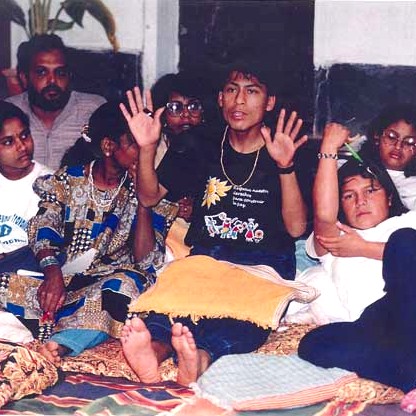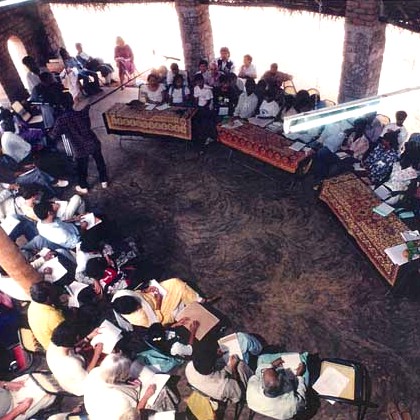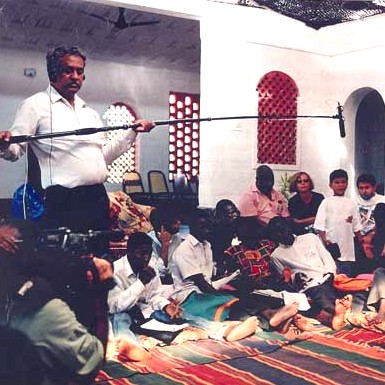Kundapur 1996
Delegates from 33 countries
In 1996, the movements of working children and youth gained new strength when, for the first time in their history, they came together for an intercontinental meeting. This was preceded by two preparatory meetings: the Asian delegation in Bangalore (India) and the African delegation in Dakar (Senegal). Continental coalitions have existed in Latin America since 1988 and in Africa since 1994.
34 delegates from 33 different countries in Africa, Asia and Latin America took part in this meeting, which took place in Kundapur (India) between 29 November and 9 December. They were democratically elected in their home organisations and some of them arrived without adult accompaniment. Together they represented the following countries:
Latin America: Brazil, Argentina, Uruguay, Paraguay, Peru, Bolivia, Colombia, Chile, Ecuador, Venezuela, Guatemala, Nicaragua, Honduras, El Salvador, Mexico, Belize, Cuba, Panama, Costa Rica.
Africa: Benin, Burkina Faso, Ivory Coast, Guinea (Bissau), Guinea (Conakry), Mali, Niger, Senegal, Togo.
Asia: India, Bangladesh, Nepal, Thailand.
Contents of the conference
Most delegates had travelled for several days and quite a few had experienced difficulties with visas and entry requirements. So the first days were meant to get to know each other, to get together and to get used to the cultural conditions. As a symbol of trust, each delegation planted a tree at the beginning of the meeting, which would grow and later bear fruit. For the duration of the meeting, the children divided into committees responsible for logistics, observation/documentation and public relations.
The discussions initially revolved around the topics:
- Why do children work?
- What is "good work", what is "bad work"?
- Why do children have to migrate?
- Under what circumstances must children work?
The delegates reported on their own experiences from their home countries and organisations of origin and were very surprised that their problems and approaches to solutions largely coincided with those of children and youth from other parts of the world.
During the exchange of information and experience, it became clear that the movements of the individual countries had already achieved improvements in some areas. The topics discussed included health, education, labour, the situation of migrants, how to deal with boycotts of export products involving children, and finally the development of their own organisations. There was a lot of discussion about the distinction between child labour and child work, as well as about their own ideas of "decent work".
The ILO Convention and strategies for participation
The representatives of several internationally active NGOs (Redd Barna, Raedda Barnen, terre des hommes, Save the Children, Caritas and Hivos), as well as of UNICEF and the International Labour Organisation (ILO) or the ILO Programme for the Elimination of Child Labour (IPEC), who were present as observers, were asked to report on their work. This provided an opportunity for intensive discussions on policies, programmes and measures "against child labour". Particular attention was paid to the debate on ILO Convention 138 (setting the minimum age) and the planned ILO Convention on the forms of child labour which must be combated with particular urgency. Strategies were jointly developed for participation in international conferences on children's rights and child labour.
Demands and common objectives
All participants agreed that only the organisation of working children can help to solve their problems. There was agreement that children's rights should play an important role here, even if they are understood and interpreted differently in the individual movements.
On the basis of their experience, delegates concluded that the boycott measures taken so far against the products of their work had done them more harm than good. For example, Aimé from Africa remarked: "If there are people who are organising to speak out in favour of a boycott, then we should organise ourselves to speak out against a boycott". Instead, the delegates demanded better working conditions, better pay, reasonable working hours, educational opportunities, the abolition of child abuse, social security and opportunities for development in their work.
As the meeting had aroused great interest among journalists, the delegates published a press release after only a few days. At the end of the world meeting, they summarised their ideas and demands in a short but meaningful communiqué that was distributed worldwide: The "Ten Points of Kundapur".
Organisation of the meeting
The organisation of the first world meeting was in the hands of the South Indian children's organisation Bhima Sangha and its supporting organisation Concerned for Working Children (CWC). The meeting was co-organised by the International Working Group on Child Labour (IWGCL), the African Movement of Working Children and Youth (AMWCY), its supporting organisation ENDA, the Peruvian children's organisation MANTHOC and the Brazilian Movement of Street Children (MNMMR).
Related pages
Kundapur final declaration ("10 Points of Kundapur")
Updated: 14.12.2020



